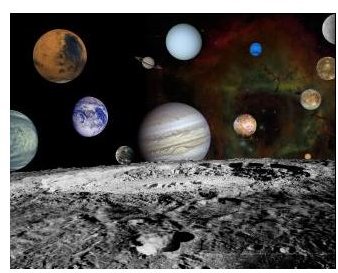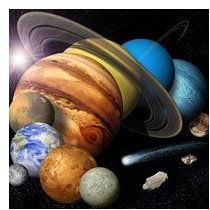Interesting Facts about the Solar System: 19 Fun Facts about the Solar System as We Know It
All the planets, their satellites, comets and meteors make up the family of the sun, which together form the solar system. The eight planets in order of their distance from the sun are Mercury, Venus, Earth, Mars, Jupiter, Saturn, Uranus, and Neptune (Pluto is not considered as a planet as per the latest classification of solar system). The solar system can be divided into two parts informally: The first part encompasses four planets along with asteroid belt and the other part includes other giant gas planets and the smaller Pluto. The following is some fun tidbits you may not have known about the solar system including asteroid belt facts and more information on stars and planets.
Images

Facts about the Solar System
Few facts about our Solar system:
-
Sun: Richest source of electromagnetic energy.
-
Sun accounts for 99.86 percent of solar system’s mass.
-
Sun is a G-2 star.
-
Composition of solar system: Sun, Planets, Comets, Moons, Minor planets, Meteoroids, Interplanetary Medium.
-
Sun’s stellar neighbor: Red dwarf star Proxima Centauri.
-
Distance between sun and its nearest neighbor: Dwarf star Proxima Centari, is 4.2421 light years.
-
Speed of solar wind is 800 km/s near coronal holes and is around 300 km/s at streamers.
-
Venus has longest day in our solar system. A day’s length on Venus is 243 earth days.
-
The terrestrial planets: Mercury, Earth, Venus, Mars
-
Jovian Planets: Jupiter, Saturn, Uranus, Neptune.
-
Hottest Planet: Venus (around 237 degrees Centigrade)
-
Shortest Day: Jupiter ( A day on Jupiter is equivalent to 9.9 hours on earth)
-
Coldest Planet: Pluto (plutoid) (average temperature is -187 degrees Centigrade)
-
Fasting Orbiting Planet: Mercury (One year is equivalent to 87.96 earth days)
-
Heaviest Planet: Jupiter (Its mass is 1.9 * 10 27 Kg)
-
One dwarf planet: Ceres
-
Two Plutoids: Pluto and Eris.
-
Earth revolution about the sun: 365.25 days
-
Number of moons in solar system: There are 166 known moons till now in solar system.
-
In 2005 Astronomers discovered an object bigger than Pluto. It was 9 billion miles away from sun in time to come it may be labeled the tenth planet.
2**.** Fact about Venus: It rotates in the reverse direction from the other planets.
- Largest Moons of the Solar system which are even bigger than Mercury are Titan, Ganymede.
